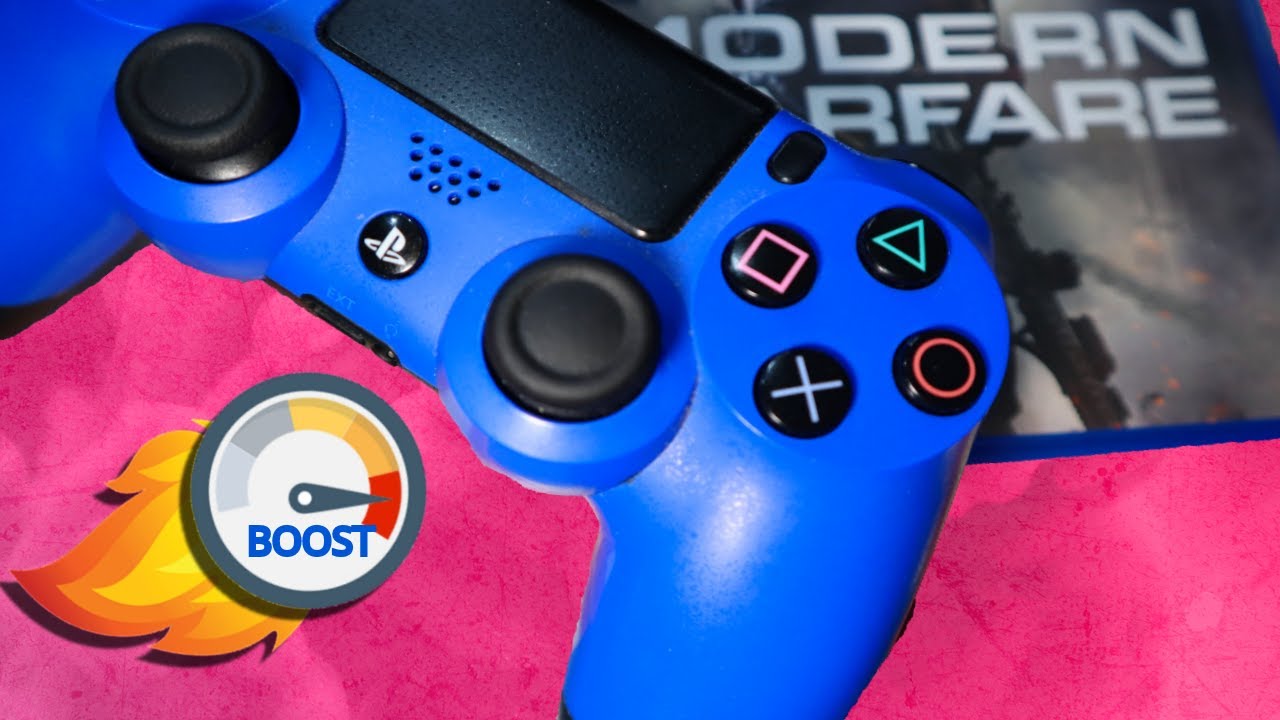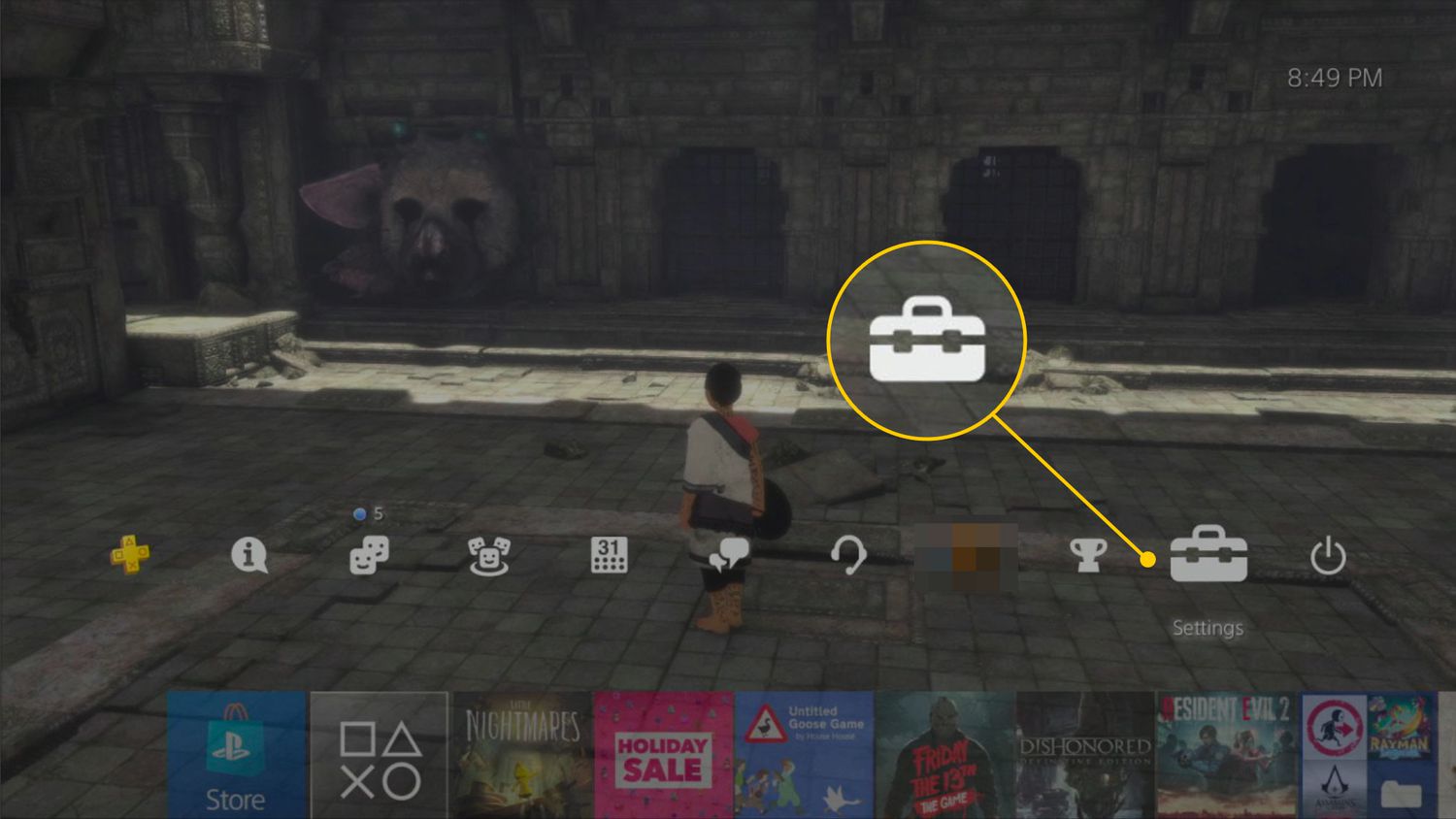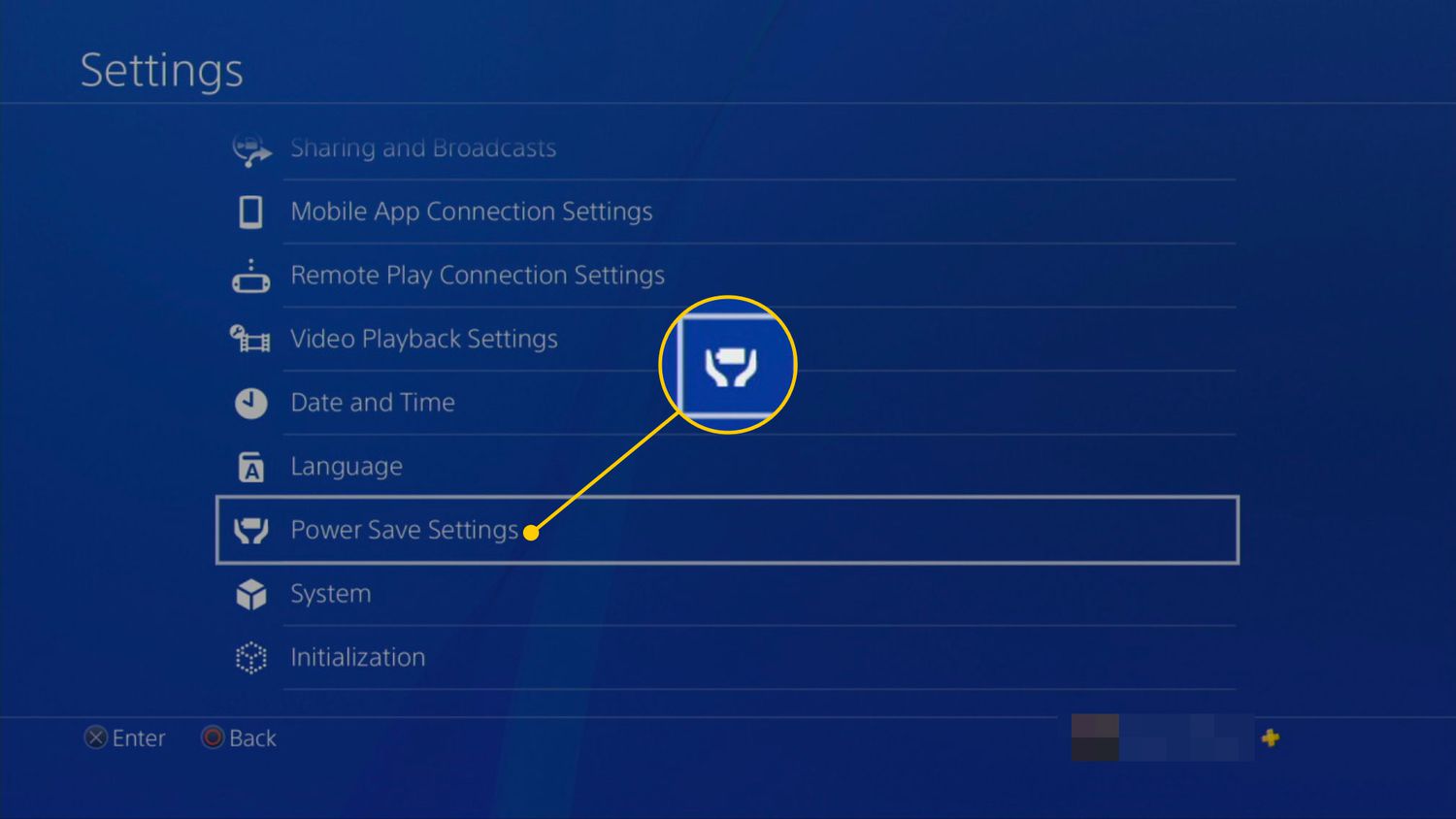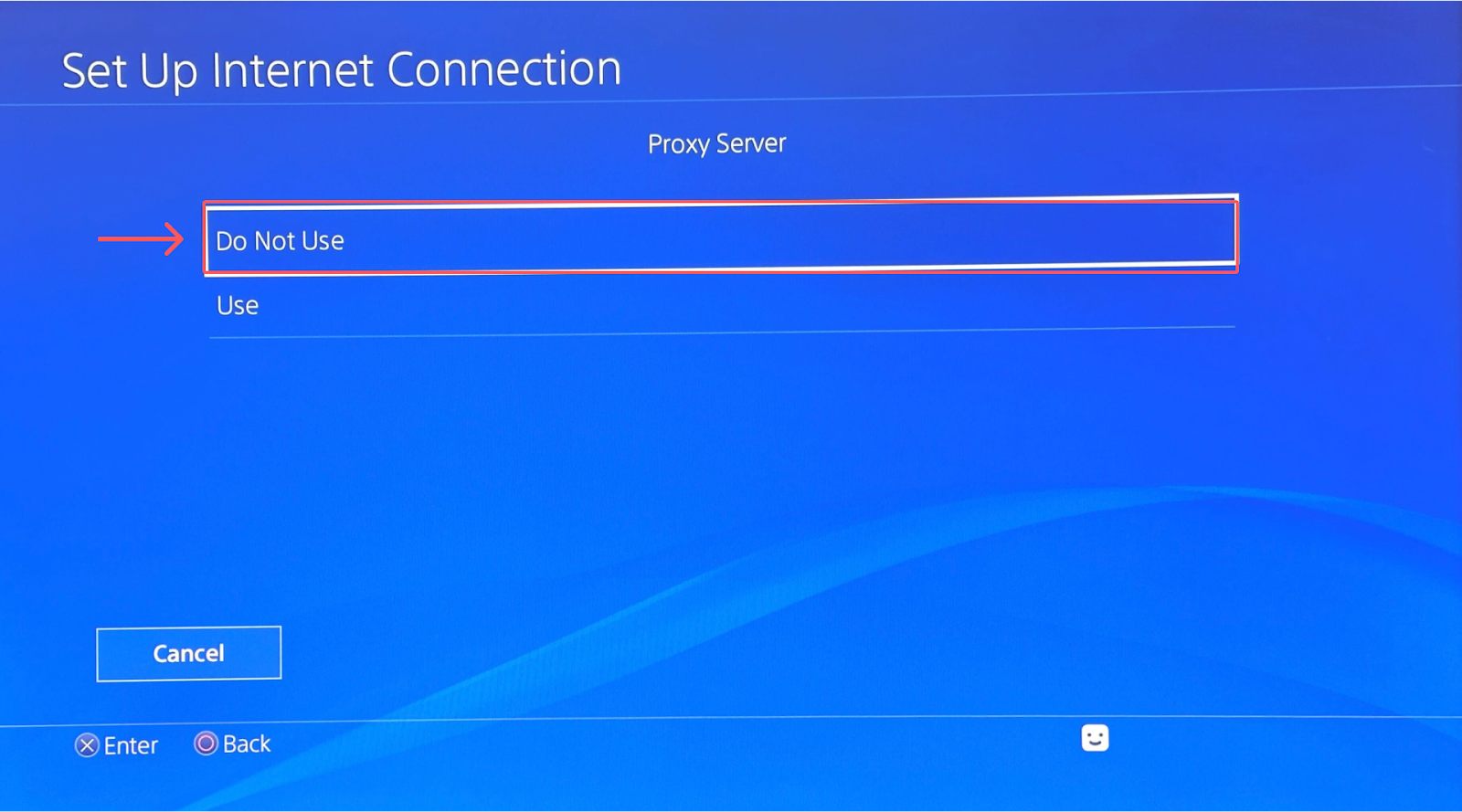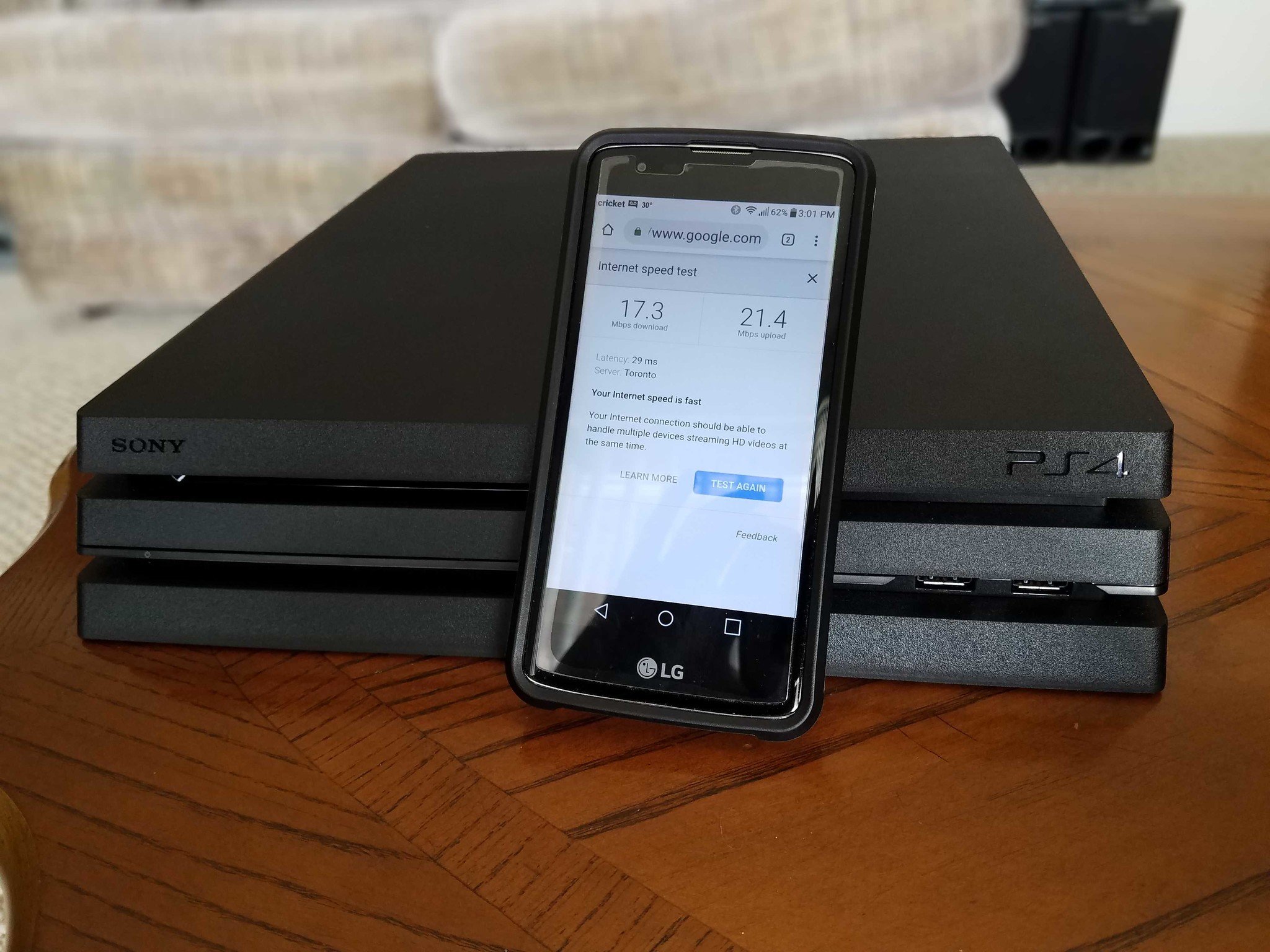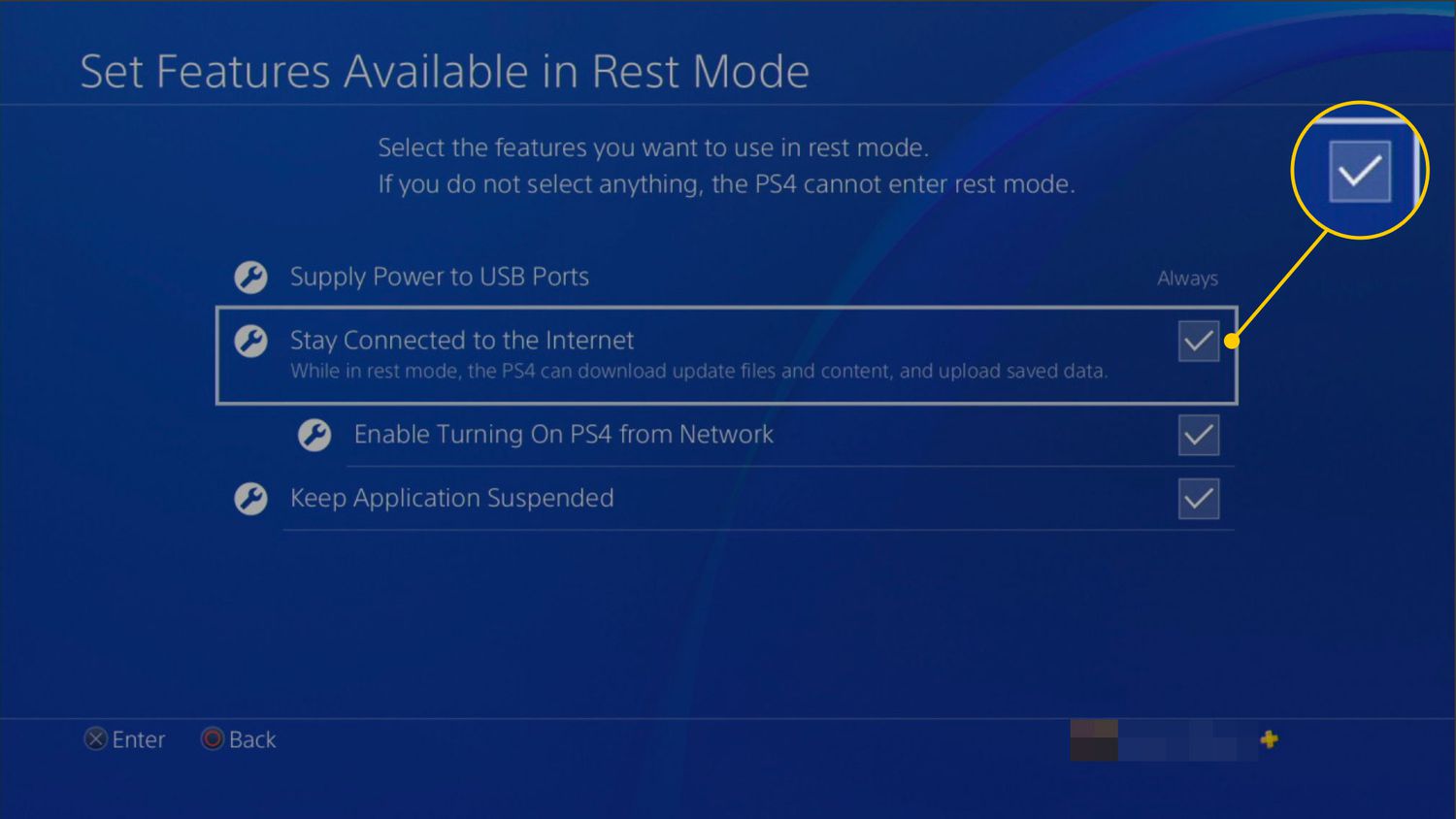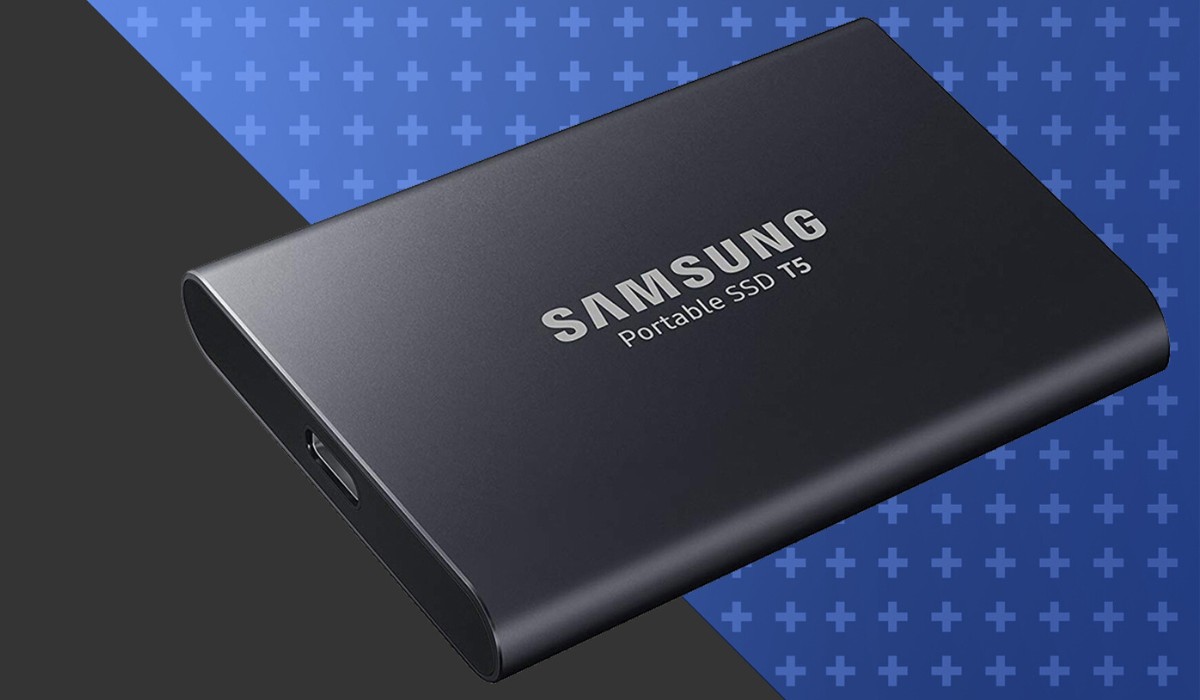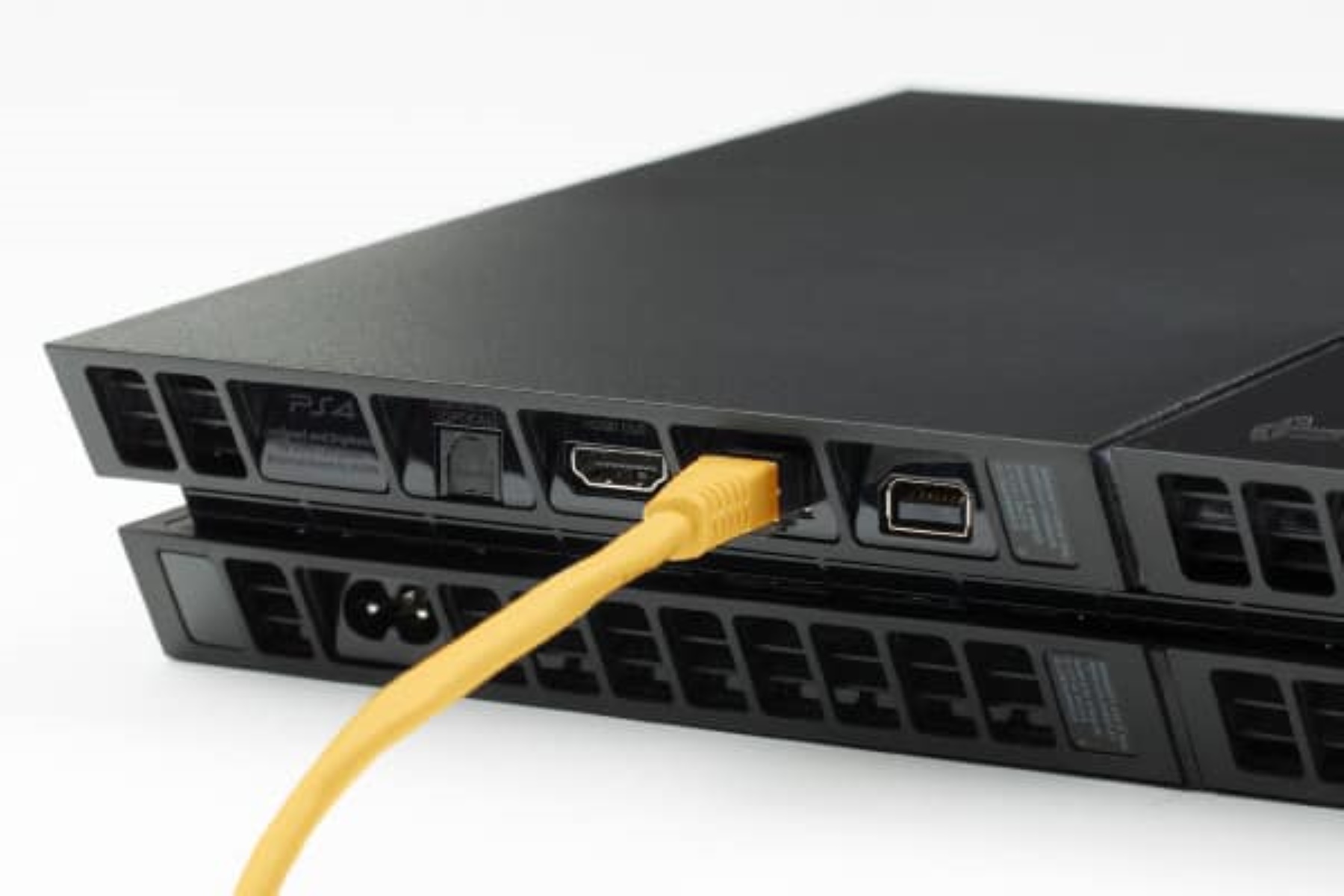Introduction
Online gaming on the PlayStation 4 (PS4) provides gamers with endless hours of fun and competition. However, there can be times when you experience lag, slow connection speeds, or long wait times. These issues can be frustrating and hinder your overall gaming experience.
Fortunately, there are several ways to improve the online gaming performance of your PS4 and ensure a smoother and faster gaming experience. In this article, we will explore various tips and techniques to help you make your PS4 online gaming faster.
Whether you enjoy playing multiplayer games with friends or challenging opponents from around the world, optimizing your internet connection and fine-tuning your PS4 settings can significantly enhance your gaming experience. By following the advice outlined in this article, you’ll be able to minimize lag, reduce buffering, and maximize your gaming performance. Let’s dive in!
Before we jump into the specific tips, it’s important to note that Internet speeds can vary depending on your location, internet service provider (ISP), and the overall network congestion. Therefore, not all methods may work equally well for everyone. However, trying out these different strategies will give you a better chance of improving your online gaming experience on the PS4.
In the following sections, we will cover various aspects such as checking your internet connection, optimizing network settings, and reducing bandwidth usage to make your PS4 online gaming faster. Let’s get started with the first tip – checking your internet connection.
Check Your Internet Connection
When it comes to online gaming, a stable and high-speed internet connection is crucial. Before exploring other optimizations, it’s important to ensure that your internet connection is reliable. Here are a few steps to check and improve your internet connection:
- Perform a Speed Test: Start by running a speed test to check your current internet speeds. There are many online tools available that can measure your upload and download speeds. If your speeds are significantly lower than what you’re paying for, contact your ISP to troubleshoot the issue.
- Restart Your Router: Sometimes, a simple router restart can resolve temporary connection issues. Turn off your router, wait for a minute, and then turn it back on. This can help refresh the connection and improve performance.
- Connect Your PS4 Directly: If you’re using a Wi-Fi connection, try connecting your PS4 to the router using an Ethernet cable. Wired connections tend to be more stable and provide faster speeds compared to wireless connections.
- Move Closer to the Router: If you prefer using Wi-Fi, ensure that your PS4 is positioned close to the router. Walls, furniture, and other obstacles can weaken the signal strength and impact your connection speeds.
- Secure Your Network: Make sure your Wi-Fi network is secured with a strong password. This will prevent unauthorized access and ensure that other devices or individuals on the network are not hogging your bandwidth.
- Update Firmware and Drivers: Check for firmware updates for your router and update them to the latest version. Similarly, ensure that your PS4’s system software and game updates are also up to date. Outdated firmware and software can sometimes cause connection issues.
By following these steps, you can identify and resolve potential problems with your internet connection. These simple optimizations can significantly improve your online gaming experience on the PS4. Now that you have checked your internet connection, let’s move on to the next section: using a wired connection.
Use a Wired Connection
While Wi-Fi provides convenience, a wired connection can offer a more stable and faster internet connection for online gaming. If possible, consider connecting your PS4 to the router using an Ethernet cable. Here’s why:
- Reduced Interference: Wi-Fi signals can be affected by various factors like walls, other devices, and distance from the router. A wired connection eliminates these potential sources of interference, providing a more consistent and reliable connection.
- Increased Speed: Ethernet connections generally offer higher speeds compared to Wi-Fi connections. This means faster download and upload speeds, reduced latency, and a smoother gaming experience.
- Improved Stability: With a wired connection, you can minimize the chances of experiencing sudden fluctuations or drops in your connection. This is particularly important in online multiplayer games, where a stable connection is crucial for real-time interaction with other players.
- Lower Latency: Latency, commonly known as “ping,” refers to the delay between your actions in the game and the server’s response. Wired connections typically have lower latency compared to Wi-Fi, allowing for quicker and more responsive gameplay.
To switch to a wired connection, follow these steps:
- Locate the Ethernet port on your PS4 and connect one end of the Ethernet cable to it.
- Connect the other end of the Ethernet cable to an available LAN port on your router.
- On your PS4, navigate to “Settings” in the main menu.
- Select “Network” and then choose “Set Up Internet Connection.”
- Follow the on-screen instructions to complete the setup process. Make sure to select the “Wired” option when prompted.
By using a wired connection, you can maximize your online gaming performance on the PS4. However, if a wired connection is not feasible or convenient for you, there are other optimizations that you can explore. In the next section, we will discuss upgrading your internet plan to ensure faster speeds.
Upgrade Your Internet Plan
If you consistently experience slow internet speeds and have exhausted other troubleshooting methods, it may be time to consider upgrading your internet plan. Here are a few reasons why upgrading can benefit your PS4 online gaming experience:
- Higher Speeds: Upgrading to a higher-speed internet plan provides you with faster upload and download speeds. This can significantly reduce lag, improve load times, and enhance your overall gaming performance.
- Increased Bandwidth: Bandwidth refers to the amount of data that can be transferred over your internet connection within a given time frame. By upgrading your plan, you can enjoy more bandwidth, allowing for smoother online gaming experiences, especially in demanding multiplayer games.
- Improved Stability: Some lower-tier internet plans might experience frequent drops in connection or fluctuations in speeds. Upgrading to a higher-tier plan can provide a more stable and consistent connection, minimizing interruptions during your gaming sessions.
- Reduced Network Congestion: As higher-speed plans typically attract fewer users, upgrading can help you avoid network congestion during peak gaming hours. This can result in faster and more reliable connections, particularly when playing online games with large player bases.
Before upgrading your internet plan, consider the following:
- Research and Compare: Look for internet service providers in your area and compare their available plans. Consider factors such as speed, pricing, and customer reviews to choose the plan that suits your gaming needs.
- Contact Your ISP: Get in touch with your current internet service provider and inquire about available upgrade options. They may have promotional offers or suggestions based on your specific requirements.
- Consider Bundle Deals: Sometimes, bundling your internet service with cable or phone services can result in cost savings and additional benefits. Explore bundle options to maximize value for your money.
- Read the Fine Print: Before committing to an upgraded plan, be sure to understand the terms and conditions, including any data caps, contract periods, and potential early termination fees.
Upgrading your internet plan can provide significant improvements to your PS4 online gaming experience. While it may involve additional costs, the benefits of faster speeds, increased stability, and reduced network congestion make it a worthwhile investment for avid gamers. Once you have upgraded your plan, you can move on to other optimizations discussed in the following sections.
Check for Network Interference
Network interference can significantly impact your internet connection and affect the performance of your PS4 online gaming. Identifying and mitigating sources of interference can help improve your gaming experience. Here are some common culprits and steps you can take:
- Move Away from Other Devices: Electronic devices like cordless phones, microwaves, and baby monitors can interfere with your Wi-Fi signal. Keep your PS4 and router away from such devices, especially during intense gaming sessions.
- Change Wi-Fi Channel: Wi-Fi routers operate on different channels to avoid interference from nearby networks. However, if your network is still experiencing interference, try changing the Wi-Fi channel in your router’s settings. Choose a less congested channel to improve signal quality.
- Avoid Thick Walls and Obstacles: Physical barriers like thick walls and furniture can weaken Wi-Fi signals. Position your router and PS4 in a location where there are fewer obstacles between them, allowing for better signal strength.
- Use Wi-Fi Extenders or Mesh Systems: If your router’s signal doesn’t reach all areas of your home, consider using Wi-Fi extenders or mesh systems to expand coverage. These devices can help eliminate dead spots and improve signal strength throughout your gaming area.
- Check for Nearby Wi-Fi Networks: In densely populated areas, multiple Wi-Fi networks can interfere with each other. Use a Wi-Fi analyzer app on your smartphone or PC to identify nearby networks and their channels. Choose a channel that has the least interference.
- Update Router Firmware: Check for firmware updates for your router and install them if available. Manufacturers release firmware updates to improve performance, stability, and fix known issues. Updating your router firmware can help eliminate potential sources of interference.
By taking these steps, you can minimize network interference and create a more stable Wi-Fi environment for your PS4. This, in turn, will enhance your online gaming experience by improving connection quality and reducing latency. If network interference persists even after implementing these measures, you may want to contact your internet service provider for further assistance.
Now that you have tackled network interference, let’s move on to the next section – reducing bandwidth usage to optimize your PS4 online gaming performance.
Reduce Bandwidth Usage
Bandwidth is the amount of data that can be transmitted over an internet connection in a given time period. When your internet connection is being used for multiple tasks or devices, it can result in slower speeds and increased latency during online gaming. To optimize your PS4 online gaming performance, here are some effective ways to reduce bandwidth usage:
- Close Unnecessary Apps and Background Processes: Applications running in the background on your PS4 can consume bandwidth even when you’re not actively using them. Close any apps or processes that are not required for your gaming session to free up bandwidth.
- Limit Downloads and Updates: Large file downloads or updates can consume a significant amount of bandwidth. Consider scheduling downloads and updates during off-peak hours to minimize their impact on your gaming experience.
- Manage Streaming and Video Services: Streaming services like Netflix, YouTube, or Twitch can consume a considerable amount of bandwidth. If you’re experiencing lag during online gaming, consider temporarily pausing or minimizing these streaming services to free up bandwidth for your gaming session.
- Use Quality of Service (QoS) Settings: Many routers have Quality of Service (QoS) settings that allow you to prioritize certain types of network traffic. Set your PS4 as a high-priority device in the QoS settings to ensure it receives maximum bandwidth during online gaming sessions.
- Optimize Game Settings: Some games have options to adjust gameplay settings to reduce bandwidth usage. Look for options like disabling voice chat, limiting the number of players in multiplayer matches, or reducing graphical quality to optimize bandwidth utilization.
- Enable Data Saving Modes: Certain games and console settings have data saving modes that can help reduce bandwidth consumption. Enable these modes if available to reduce the amount of data transferred during gameplay.
Implementing these bandwidth-saving techniques can help improve your online gaming experience on the PS4 by reducing network congestion and ensuring a more stable connection. Experiment with these optimizations to find the settings that work best for you. With reduced bandwidth usage, you can enjoy smoother gameplay, reduced lag, and improved overall performance.
Now that you have learned how to reduce bandwidth usage, let’s move on to the next section – closing background applications to free up system resources for better gaming performance.
Close Background Applications
When playing games on your PS4, having unnecessary applications running in the background can consume system resources and impact gaming performance. Closing these background applications can help free up valuable resources and ensure smoother gameplay. Here are some steps to close background applications on your PS4:
- Access the Quick Menu: While in a game, press and hold the PS button on your controller to access the Quick Menu.
- Navigate to the Application Close Options: Scroll down on the Quick Menu and select “Close Applications.”
- Select Apps to Close: A list of open applications will appear. Select the applications you want to close by highlighting them and pressing the X button on your controller. You can select multiple applications at once.
- Confirm the Close: Once you have selected the applications to close, press the X button to confirm the action. The selected applications will be closed, freeing up system resources for better gaming performance.
Closing background applications not only frees up system resources but also helps reduce network bandwidth usage, as some applications may perform background tasks that consume internet data. By closing unnecessary apps, you can optimize your PS4’s performance and minimize potential lag during online gaming sessions.
In addition to closing applications, it’s also essential to prevent apps from automatically launching in the background. To manage this, follow these steps:
- Go to the main PS4 menu.
- Scroll to the right and select “Settings.”
- Choose “System” and then “Automatic Downloads and Uploads.”
- Disable “Featured Content” and “System Software Update Files.”
- These settings prevent automatic downloads and uploads from running in the background, preserving system resources for gaming.
By closing background applications and managing automatic launch settings, you can optimize your PS4’s resources and improve gaming performance. This will enable you to enjoy seamless gameplay and a more immersive gaming experience on your PS4.
Now that you have learned how to close background applications, let’s explore the next section – clearing your PS4’s cache for improved performance.
Clear Your PS4’s Cache
Over time, the cache on your PS4 can accumulate temporary files and data from games and applications, which can impact system performance. Clearing the cache is a simple yet effective way to optimize your PS4’s performance and ensure smoother gameplay. Follow these steps to clear your PS4’s cache:
- Power off your PS4: Press and hold the power button on the front of the console until it beeps and turns off completely. Make sure the console is fully powered off before proceeding.
- Disconnect the power cord: Unplug the power cord from the back of the console. This step is essential to ensure a complete power cycle.
- Wait for a few minutes: Leave your PS4 unplugged for approximately 3-5 minutes. This will allow any residual power to dissipate.
- Reconnect the power cord: Plug the power cord back into the back of the console.
- Power on your PS4: Press the power button on the front of the console to turn it back on. Wait for the system to fully boot up.
- Clear the cache: Once your PS4 is powered on, navigate to the main menu and select “Settings.” Then choose “Storage,” followed by “System Storage.” Select “Applications” to view a list of installed applications. Highlight an application and press the “Options” button on your controller. From the options menu, select “Delete” to clear the cache for that application. Repeat this process for other applications if desired.
Clearing the cache helps remove temporary files and data that may be causing performance issues on your PS4. This process can improve loading times, reduce lag, and optimize overall system performance, resulting in a smoother and more enjoyable gaming experience.
Remember, clearing the cache does not delete your saved games or personal data. It only removes temporary files and data associated with applications. However, it’s always a good idea to regularly back up your game saves to ensure they are protected.
Now that you have cleared your PS4’s cache, let’s move on to the next section – using a DNS server to potentially improve your online gaming connectivity.
Use a DNS Server
A DNS (Domain Name System) server is responsible for translating web addresses into IP addresses, allowing your PS4 to connect to the internet. By default, your PS4 uses the DNS server provided by your internet service provider (ISP). However, switching to a different DNS server can potentially improve your online gaming connectivity. Here’s how to use a DNS server on your PS4:
- Access the PS4 settings: From the main menu, scroll to the right and select “Settings”.
- Select “Network”: In the settings menu, choose “Network” to access network settings.
- Set up an internet connection: Select “Set Up Internet Connection” and choose either “Use Wi-Fi” or “Use a LAN Cable” based on your preferred connection method.
- Customize the connection: Select “Custom” to customize the network settings.
- Select IP Address settings: Choose either “Automatic” or “Manual” depending on your network setup. If you choose “Manual,” enter the IP address and subnet mask provided by your router or network administrator.
- Select DNS settings: Choose “Manual” in the DNS settings.
- Enter the DNS server address: Input the desired DNS server address. You can use popular options like Google Public DNS (8.8.8.8 and 8.8.4.4) or OpenDNS (208.67.222.222 and 208.67.220.220).
- Complete the setup: Follow the on-screen instructions to complete the network setup process, and then test the internet connection to confirm the changes.
By using a DNS server like Google Public DNS or OpenDNS, you may experience faster and more stable internet connections, which can contribute to improved online gaming performance on your PS4. DNS servers can sometimes provide better response times, reduce latency, and offer enhanced security features.
It’s worth noting that the impact of using a different DNS server may vary depending on factors such as your location and ISP. If you encounter any issues with your network connectivity or experience difficulties accessing certain websites or online services after changing the DNS server, consider reverting to your ISP’s default DNS settings.
Now that you have set up a DNS server on your PS4, let’s explore the next section – changing your router’s channel to optimize your online gaming performance.
Change Your Router’s Channel
If you’re experiencing slow or unreliable Wi-Fi connections on your PS4, changing your router’s channel can potentially improve your online gaming performance. Wi-Fi routers operate on different channels to avoid interference from nearby networks. By selecting the optimal channel, you can minimize interference and enhance your internet connectivity. Here’s how to change your router’s channel:
- Access your router’s settings: Open a web browser on a device connected to your router’s network and enter the router’s IP address in the address bar. This IP address is typically mentioned on the router itself or in the router’s documentation.
- Log in to your router: Enter the username and password for your router. If you haven’t changed these, refer to the router’s documentation or contact your router’s manufacturer or internet service provider for the default login credentials.
- Navigate to the wireless settings: Look for a section in your router’s settings menu related to wireless or Wi-Fi settings.
- Choose a channel: Locate the channel settings and view the current channel being used by your router. Select a different channel from the available options. Channels 1, 6, and 11 are commonly recommended as they do not overlap with each other.
- Apply the changes: Save and apply the changes in your router’s settings. The router will restart, and the new channel will be used for wireless connections.
Changing the router’s channel can help minimize interference from nearby networks and improve the stability and speed of your Wi-Fi connection on your PS4. It’s worth noting that the optimal channel may vary depending on the surrounding wireless networks and devices in your area. You may need to experiment with different channels to find the one that works best for your specific environment.
Additionally, it’s important to keep in mind that changing the channel of your router may impact other devices connected to the network. Before making any changes, consider how the channel selection may affect other devices’ connectivity within your household.
Now that you have learned how to change your router’s channel, you can move on to the next section – using Quality of Service (QoS) settings to prioritize your PS4’s internet traffic.
Use Quality of Service (QoS) Settings
If you experience network congestion or latency issues during online gaming, utilizing Quality of Service (QoS) settings on your router can help prioritize your PS4’s internet traffic, ensuring a smoother gaming experience. QoS settings allow you to allocate bandwidth for specific devices or applications. Here’s how you can use QoS settings:
- Access your router’s settings: Open a web browser on a device connected to your router’s network and enter the router’s IP address in the address bar. This IP address is typically mentioned on the router itself or in the router’s documentation.
- Log in to your router: Enter the username and password for your router. If you haven’t changed these, refer to the router’s documentation or contact your router’s manufacturer or internet service provider for the default login credentials.
- Locate the QoS settings: Look for a section in your router’s settings menu that pertains to Quality of Service (QoS) or Traffic Management.
- Enable QoS: Switch on the QoS feature if it is not already enabled.
- Set priority: Once QoS is enabled, you can assign priority to your PS4’s internet traffic. You can typically do this by specifying the IP address or device name associated with your PS4.
- Allocate bandwidth: Some routers allow you to allocate a specific amount of bandwidth for your PS4 or prioritize it over other devices on the network.
- Save and apply the changes: After configuring the QoS settings, save and apply the changes in your router’s settings. The router will adjust the traffic management accordingly.
By utilizing QoS settings, you can ensure that your PS4 receives preferential treatment when it comes to bandwidth allocation, reducing lag and latency during online gaming sessions. This prioritization can help maintain a stable connection and ensure a smoother gaming experience, especially when other devices in your network are using bandwidth-intensive applications.
It’s important to note that the specific steps and options for enabling and configuring QoS settings may vary depending on the make and model of your router. If you are unsure about the exact procedure, consult the router’s documentation or contact the manufacturer or your internet service provider for assistance.
Now that you have learned about using Quality of Service (QoS) settings, you can move on to the next section – considering upgrading your router for improved performance and features.
Upgrade Your Router
If you have tried various optimizations to improve your PS4 online gaming performance but still face connectivity and performance issues, it might be time to consider upgrading your router. Upgrading to a newer and more advanced router can offer several benefits and enhancements for your gaming experience. Here’s why you should consider upgrading:
- Improved Wireless Technology: Newer routers often support the latest wireless standards, such as Wi-Fi 6 (802.11ax). These technologies provide faster speeds, better range, and reduced latency, resulting in improved online gaming performance.
- Better Network Management: Upgrading to a router with advanced network management features can optimize your network performance. Features like dual-band support, MU-MIMO (Multiple-User, Multiple-Input, Multiple-Output), and beamforming can enhance your PS4’s connection stability and speed.
- Enhanced Security: Older routers may lack the latest security features, leaving your network vulnerable to potential threats. Newer models often include enhanced security protocols like WPA3 encryption and built-in VPN support, ensuring a safer gaming environment.
- Increased Device Capacity: If you have multiple devices connected to your network, upgrading to a router with higher device capacity can prevent network congestion and ensure that your PS4’s gaming traffic gets sufficient bandwidth.
- Additional Features: Newer routers may offer additional features like built-in network storage, USB ports for printer or file sharing, parental control options, and more. These extra features can further enhance your gaming and network experience.
When considering a router upgrade, research different router models to find one that best suits your needs and budget. Look for models with favorable reviews, robust features, and compatibility with your internet service provider.
After acquiring a new router, make sure to follow the manufacturer’s instructions for setup and configuration. Set up your Wi-Fi network with a secure password and adjust any necessary settings to optimize your PS4 gaming performance.
Remember, upgrading your router alone won’t guarantee a flawless gaming experience. It’s essential to ensure that your internet plan, network settings, and other optimizations are also properly configured to maximize your PS4’s online gaming performance.
Now that you have learned about the benefits of upgrading your router, you’re ready to enhance your PS4 online gaming experience.
Conclusion
Optimizing your PS4 online gaming performance is essential to ensure a smooth, enjoyable, and frustration-free gaming experience. By implementing the tips and techniques discussed in this article, you can significantly improve your PS4’s connectivity, reduce lag, and enhance overall performance. Here’s a quick recap of the key points:
- Check your internet connection and ensure it is stable and capable of delivering the speeds you need for online gaming.
- Consider using a wired connection for a more stable and faster internet connection.
- Upgrade your internet plan to access higher speeds and increased bandwidth if necessary.
- Check for network interference and take steps to minimize it, such as moving away from other devices or changing your router’s channel.
- Reduce bandwidth usage by closing unnecessary apps, managing streaming services, and utilizing Quality of Service (QoS) settings on your router.
- Clear your PS4’s cache to optimize system performance.
- Use a DNS server for potentially faster and more reliable internet connectivity.
- Consider upgrading your router to a newer model with advanced features and improved performance.
Remember that every gaming setup is unique, and the effectiveness of these optimizations may vary. It may require some trial and error to find the best combination of settings and adjustments for your specific situation. Additionally, staying up to date with firmware updates for your PS4 and router can also help ensure optimal performance.
By following these tips, you can maximize your PS4’s online gaming potential and enjoy seamless gameplay, reduced lag, and an overall improved gaming experience. Now, put these optimizations into practice and unleash the full potential of your PS4 online gaming adventures!







